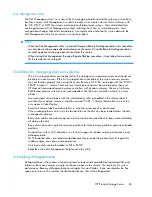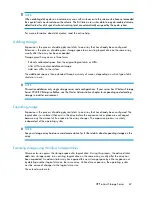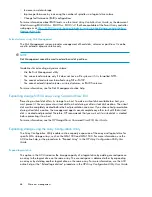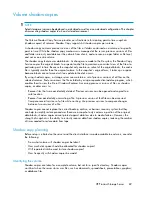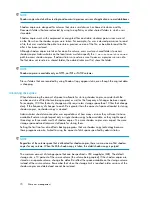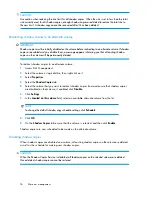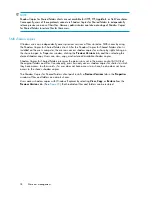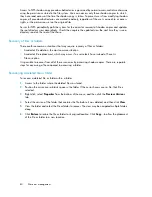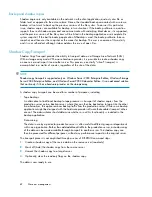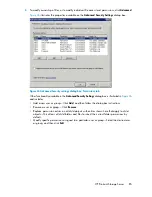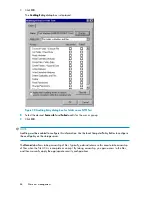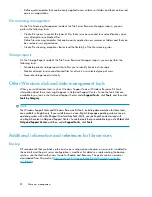
Figure 23 Client GUI
When users view a network folder hosted on the storage server for which shadow copies are enabled,
old versions (prior to the snapshot) of a file or directory are available. Viewing the properties of the
file or folder presents users with the folder or file history—a list of read-only, point-in-time copies of
the file or folder contents that users can then open and explore like any other file or folder. Users can
view files in the folder history, copy files from the folder history, and so on.
NFS shadow copies
UNIX users can independently access previous versions of files stored on NFS shares via the NFS
client; no additional software is required. Server for NFS exposes each of a share's available shadow
copies as a pseudo-subdirectory of the share. Each of these pseudo-subdirectories is displayed in
exactly the same way as a regular subdirectory is displayed.
The name of each pseudo-subdirectory reflects the creation time of the shadow copy, using the format
.@GMT-YYYY.MM.DD-HH:MM:SS. To prevent common tools from needlessly enumerating the
pseudo-subdirectories, the name of each pseudo-subdirectory begins with the dot character, thus
rendering it hidden.
The following example shows an NFS share named “NFSShare” with three shadow copies, taken on
April 27, 28, and 29 of 2003 at 4 a.m.
NFSShare
.@GMT-2003.04.27-04:00:00
.@GMT-2003.04.28-04:00:00
.@GMT-2003.04.29-04:00:00
HP ProLiant Storage Server
79
Summary of Contents for PROLIANT DL160 G5
Page 1: ...HP ProLiant Storage Server user guide Part number 440584 005 First edition June 2008 ...
Page 34: ...Installing and configuring the server 34 ...
Page 52: ...Server components 52 ...
Page 94: ...File server management 94 ...
Page 112: ...Microsoft Services for Network File System MSNFS 112 ...
Page 152: ...Troubleshooting servicing and maintenance 152 ...
Page 154: ...System recovery 154 ...
Page 174: ...Index 174 ...

